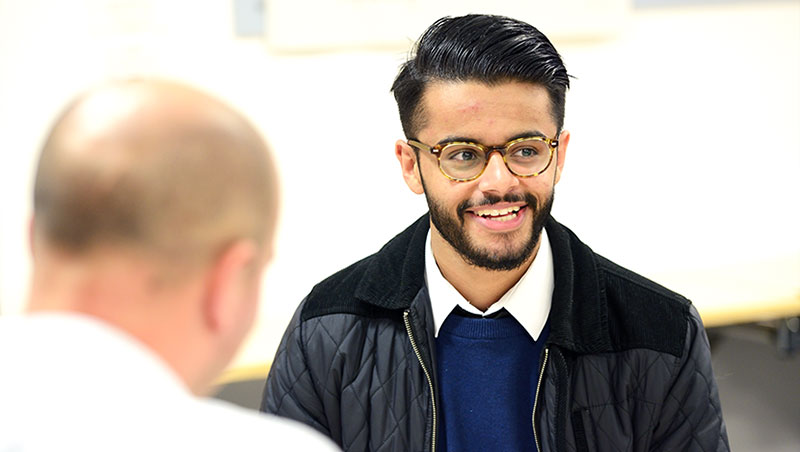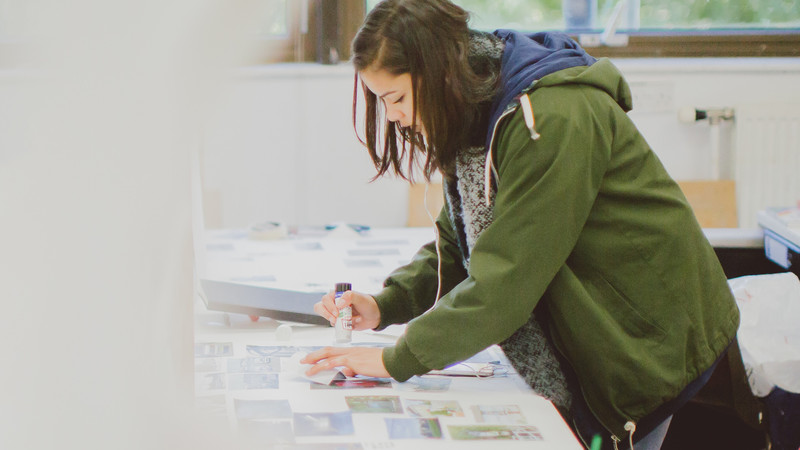Alert Due to the Coronavirus (COVID-19) pandemic, it is likely that we will be running our interviews via Skype or other online video conferencing platforms. We may also ask for electronic versions of portfolios for subject areas that require examples of student work.
Interviews and portfolios
Most UK universities do not hold interviews for most courses. Interviews are used for a range of courses that are particularly demanding (like medicine). And for some courses where the way a student speaks or presents themselves is important (like education).
Oxford and Cambridge hold interviews as part of their general undergraduate admissions process. These are particularly competitive. Tutors need this extra source of information beyond the UCAS form to identify candidates who are best-suited to their teaching. Because of this, a lot of unhelpful mythology has grown up around interviews. Universities are simply looking to recruit the best students that they can. There are no hidden agendas, and no trick questions. Your interviewers expect you to be nervous. You aren’t on trial!
The most important thing is to prepare. Tutors are looking for students who are enthusiastic, hard-working, and knowledgeable.
The best way to show these qualities is to read around the subject in advance. Do this carefully and critically - so you can say whether you agreed with the author, and why. Ask for advice from your teachers about what would be useful to read. Some universities publish lists of recommended first year reading online. If you have read a piece or two of that literature, and have your own opinions on it, you will make a good impression! Never claim to have read something that you haven’t. It won’t take your interviewers long to figure it out.
Whatever the result, try to enjoy the day. This is an opportunity to discuss an interesting subject with some experts. You might even get some good ideas to think about in the run-up to your examinations.
How to prepare
- Know where you’re going and plan your journey. Plan to be early - being late doesn’t make a good impression. You might even miss your slot.
- Check whether to wear casual or smart dress. Aim to look smart and be comfortable, but don’t worry. You aren’t assessed on your appearance.
- Research the university and course - check prospectuses, course leaflets and websites.
- Look at department web pages to get an idea of the course structure, topics, modules and work placements.
- Keep up to date with developments in your subject area. Read relevant articles in newspapers, magazines, journals and websites. Look out for radio and TV programmes and take good notes on them.
- Re-read your personal statement to refresh your memory. Make sure that you really do know about anything you've mentioned in the statement. The tutors will probably ask about it!
- Know what to expect. Interviews come in different formats. It could be with one or two admissions tutors or a group interview. It could involve written tests or auditions. You may be asked to bring a portfolio of recent work.
- Some teachers offer practice interviews - these can help you to develop confidence. Don't panic if your actual interview is different though - interviews are very individual.
Portfolios
- Show your interviewers how interested you are in the subject.
- Take a copy of your personal statement for reference.
- Listen carefully to questions. It is better to take a moment to think before answering, rather than rushing.
- If you don’t understand or don’t know the answer, say so.
- You can ask your own questions, but don’t ask about basic information that is easily available in the prospectus or online.
- Enjoy your day! Explore the university and local area.

For subjects like art, design, photography, architecture and other creative subjects, universities will often require you to submit a portfolio.
This is a collection of your work which the university uses to assess your talent and suitability for the course.
Your portfolio
Knowing how much to include and choosing the right pieces can be difficult. Look at the guidelines on the university’s website and follow them as closely as you can. Some will have specific guidelines relating to sizes, number of pieces, content, format and so on. Here are some general points on creating the best portfolio:
- Give yourself plenty of time. If you are pressured and stressed your work might not be as good as it could be.
- Get advice from your art teacher. They will know your work and may have ideas about what to include.
- Don’t be afraid to include some more experimental pieces which you feel aren’t as good as others. It is better to showcase a mixture of styles, subjects, media and materials than have everything looking the same.
- Think about how you have been influenced in creating each piece. Perhaps you have seen exhibition or had a particular experience at the time you made it.
- If you have an interview, be prepared to talk about the creative process or story behind your pieces. If the piece was done as part of an assignment, talk about the objectives, research and conclusions of your work.
- Show some personality in the pieces. Look for evidence of the artist’s personality in existing portfolios and think about how to bring your own into yours.
- The presentation of your work is important. This doesn’t mean you have to spend a lot of money on an expensive new holder, but something which looks smart and neat will show your attention to detail and make your work look tidier.
- Try to organise the work into themes or styles, or put it into chronological order. This shows good organisational skills and artistic awareness.Remember, each university will have its own portfolio guidelines.

